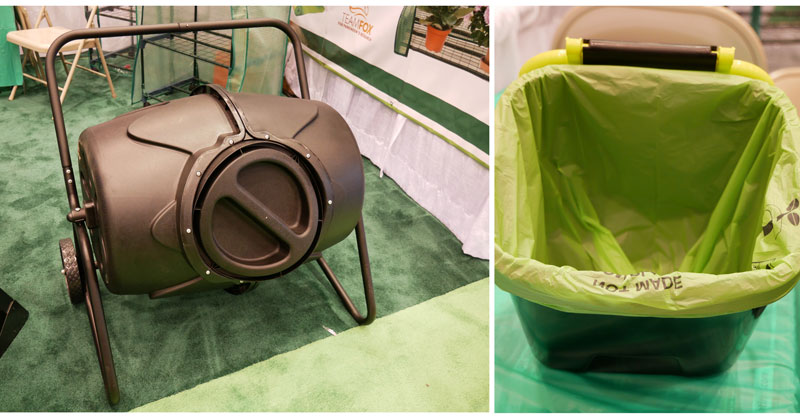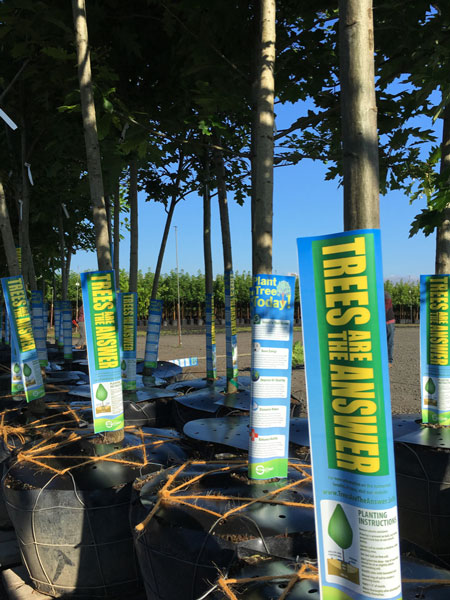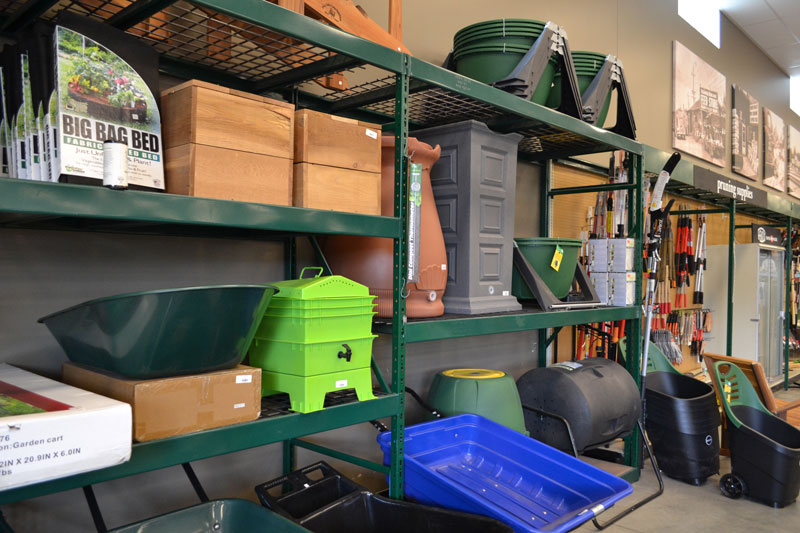3/1/2020
Gardening for the Earth
Jennifer Polanz
Consumers are becoming increasingly aware of the impact they have on the Earth. Here’s how to help them diminish that impact.
As we write about industry trends in this issue, it’s become increasingly apparent that consumers don’t just want products anymore. They want products that either help the environment or they want to buy from retailers who’ve pledged to help it themselves in some way.
Consumers’ wallets, however, don’t always follow the demands of their hearts, and that’s where the message and value proposition regarding conservation comes in. A recent Harvard Business Review story noted: “In one recent survey, 65% said they want to buy purpose-driven brands that advocate sustainability, yet only about 26% actually do so.”
Our industry is unique in that we’re able to help customers to naturally feel good about their environmentally friendly and conservation-focused purchases, and here we’ll take a look at three product categories and the positioning that can sell them.
Breaking it Down
We’re talking literally breaking down organic matter in a composter. There are a couple of ways to help consumers get more comfortable with the process, which can seem a little icky to them on the surface. Grocery shoppers are starting to see containers that are 100% backyard compostable from multiple fruit and vegetable greenhouses like Mucci Farms, NatureFresh and Sunset for tomatoes, cucumbers and berries. Those efforts to reduce plastic waste don’t help, though, unless consumers have a backyard compost pile or bin.
Retailers can also position it this way: according to the EPA, in 2017 Americans threw away 38.1 million tons of food. It also noted 94% of food waste ends up in landfills or combustion facilities. Composting can help pull much of that food waste (not all, since you can’t compost certain food items like meat and seafood) out of the landfill and turn it into useable organic material to be added to garden soil.
Boost Online Stores displayed multiple options for backyard composters at the 2019 IGC Show in Chicago, as well as kitchen counter compost “caddies” to store food waste in until it’s time to dump it in the larger bin. It also carries liner bags for the countertop caddies that can be thrown in the composter, making the whole process less messy.
 Now, Frank Franciosi, executive director of the U.S. Composting Council, warns that backyard composting, unless it’s done on a larger scale, won’t provide a lot of compost for the garden beds. But retailers can certainly help with education.
Now, Frank Franciosi, executive director of the U.S. Composting Council, warns that backyard composting, unless it’s done on a larger scale, won’t provide a lot of compost for the garden beds. But retailers can certainly help with education.
“Some of the issues are around troubleshooting,” he notes, saying consumers may have problems with temperature, moisture or wet/dry ratios. “Or why you’re not getting compost quick enough.”
Frank recommends a pitchfork and a compost thermometer (he says ReoTemp makes a quality thermometer) for consumers looking to create larger compost piles. Or if they don’t want to deal with it themselves, there are now subscription services (like compostnow.org) that provide a bin and offer a weekly service to collect a full bin of compostable waste. It’s an idea even a retailer could run with if they were interested in providing a weekly service.
“We’re seeing more and more of it, and a lot of it just has to do with the consumer,” Frank says. “The consumer wants to be more green, and we’re seeing more and more companies pushing that.”
He adds a lot of companies out there offer compost in bags and bulk, too, and the U.S. Composting Council has a Seal of Testing Assurance Program designed to certify companies offering compost. There’s a list of certified companies on the website (see the List of Resources sidebar).
There are lots of angles to pursue with composting that would: 1) Help customers reduce their waste; and 2) provide more nutrient-rich soil for the environment.

For the Trees, Please
Something that makes a customer sit up and take notice is a product that will have impact on his or her wallet via reduction in energy costs. There are lots of environmental benefits to planting trees (although they will likely not be the great solution to climate change as touted with great fanfare last year), but none quite as compelling as reducing an energy bill.
“Customers want to know ‘what’s in it for me’ when they buy a tree,” says Nancy Buley, director of communications for J. Frank Schmidt & Son Co., a wholesale tree nursery in Boring, Oregon, that’s been around for 70 years. “In the past, gardeners have typically only considered beauty or shade or curb appeal, but may not be aware of the environmental and ecosystem values that trees can add to a property, or of the potential savings on their utility bills.”
She notes the rather new i-Tree Design website that allows customers to plug in their home address and add trees around it, moving them around to find where they would provide the most benefit of shade and savings on their utility bills.
“It’s as easy as setting up a kiosk or computer terminal at the garden center,” she says of helping customers access the site, which was created by the U.S. Forest Service based on decades of research. “Garden centers could share this information via their blogs/newsletters and at on-site educational presentations, too.”
Another environmental benefit to trees that can be touted is their ability to reduce stormwater runoff and overflow, which helps local governments. In fact, it can help them so much that some cities like Portland, Oregon, offer residents rebates for purchasing trees, preferring to invest in green infrastructure versus gray infrastructure. It might be worth looking into your own city to see if any such rebates are being offered so you can promote that to your customers. Nancy notes that utility companies also routinely offer rebates to customers for planting small-stature trees that won’t get tangled in their wires.
POP, signage and tags are a great way to get the word out about the energy-savings nature of trees, and J. Frank Schmidt & Son Co. has helped retailers by creating trunk wraps for their trees that not only protect the trees during shipping, but they promote a website the company made to show the benefits of trees.
“About a decade ago, when the Forest Service was making their research available, we created a related website: www.TreesAreTheAnswer.info,” she says, adding the website is on the trunk wraps. “In the garden center, they help to publicize our Trees Are The Answer website and serve as a great billboard for sharing useful information with the customers of our garden center customers.
“The message is simple and brief and is presented with attractive graphics. Our customers love them because they help them sell more trees.”
Save the Water
Our final segment deals with water conservation, which is another area where consumers can get intimidated by technology and installation. That’s why companies like Rain Bird, which focuses on products like drip irrigation and timed, water-efficient irrigation, house a multitude of how-to videos for homeowners on its website.
 Pictured: Sky Nursery in Seattle displays compost bins, rain barrels and other eco-friendly garden supplies all together.
Pictured: Sky Nursery in Seattle displays compost bins, rain barrels and other eco-friendly garden supplies all together.
The company also has committed to water conservation with its Intelligent Use of Water philosophy.
“With efficient irrigation products and practices, it is absolutely possible for people to reduce outdoor water consumption by 25% or more without having to give up the plants, trees and gardens that add so much to our lives,” writes President Anthony LaFetra on the company’s website. “We know that water-efficient irrigation products represent just one step down a long path toward positive change. That’s why Rain Bird also focuses on helping people learn how to use water wisely and efficiently.”
Drip irrigation products can come in easy-to-install kits that are specific to the homeowner’s needs (garden bed kits vs. row crop vs. deck plantings, as offered by DripWorks), or as a wide range of individual products for replacement parts or if a homeowner wants to piece together a custom setup.
From efficient irrigation products to items like rain barrels, mulch, and native and drought-tolerant plants, garden centers can influence customers to embrace water conservation. Maybe this looks like a whole department of conservation, where customers can seek out the information they need to be more eco-friendly. Or maybe it’s spread throughout the store with the same signage to point out eco-friendly techniques.
However you set it up, education is key. To paraphrase the immortal words of poet Maya Angelou, when you know better, you do better.
List of Resources
Here are a few websites to help you on your environmental journey:
Compost bins: boostonlinestores.com
Home composting basics: www.epa.gov/recycle/composting-home
Seal of Testing Assurance Certified Composters: www.compostingcouncil.org/page/CertifiedCompostSTA
U.S. Forest Service’s i-Tree Design: www.itreetools.org/design.php
The City of Portland’s Treebate Program: www.portlandoregon.gov/bes/article/314187
A website touting the benefits of trees: www.TreesAreTheAnswer.info
Rain Bird: Rainbird.com
DripWorks: dripworks.com